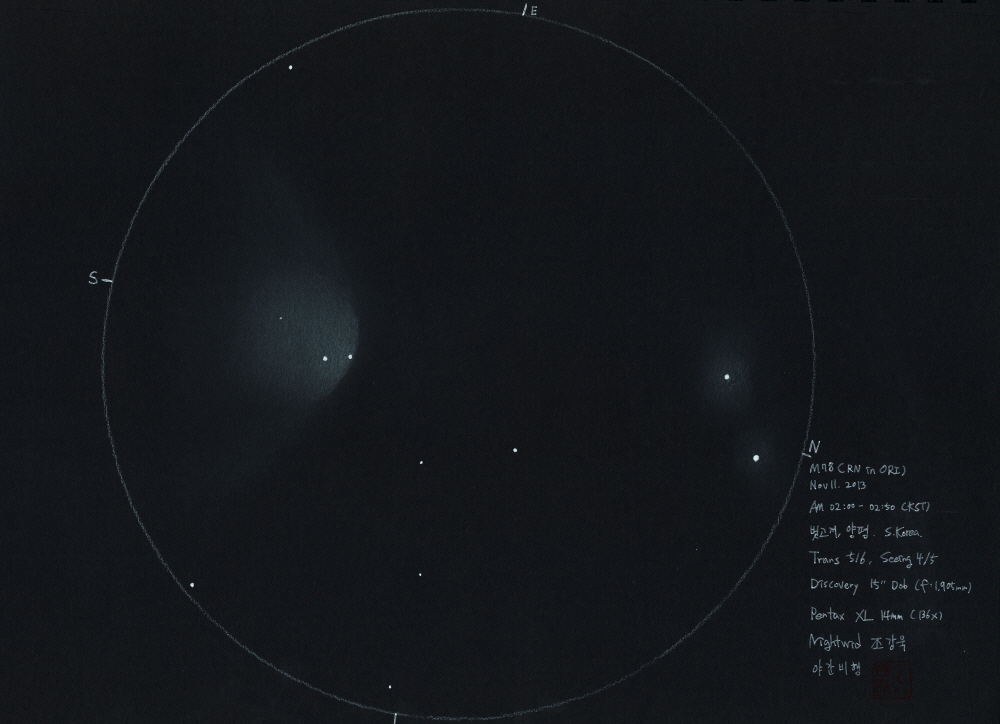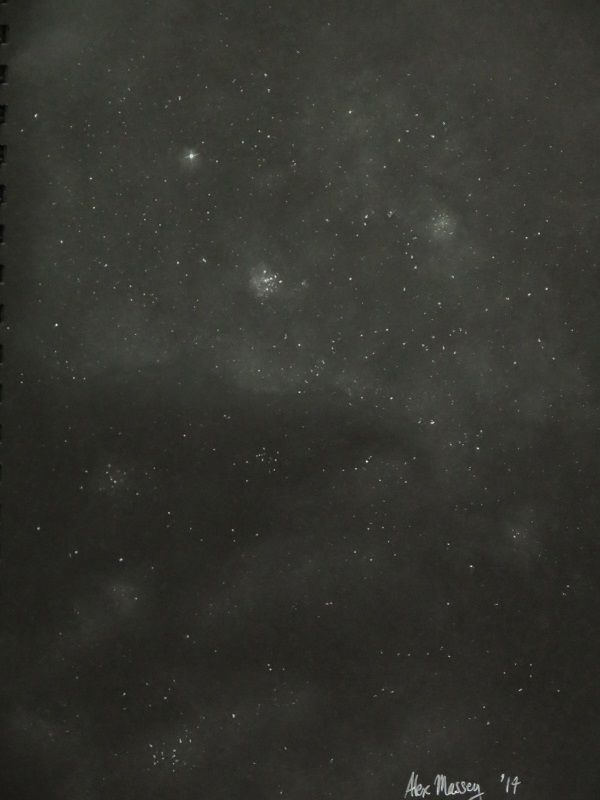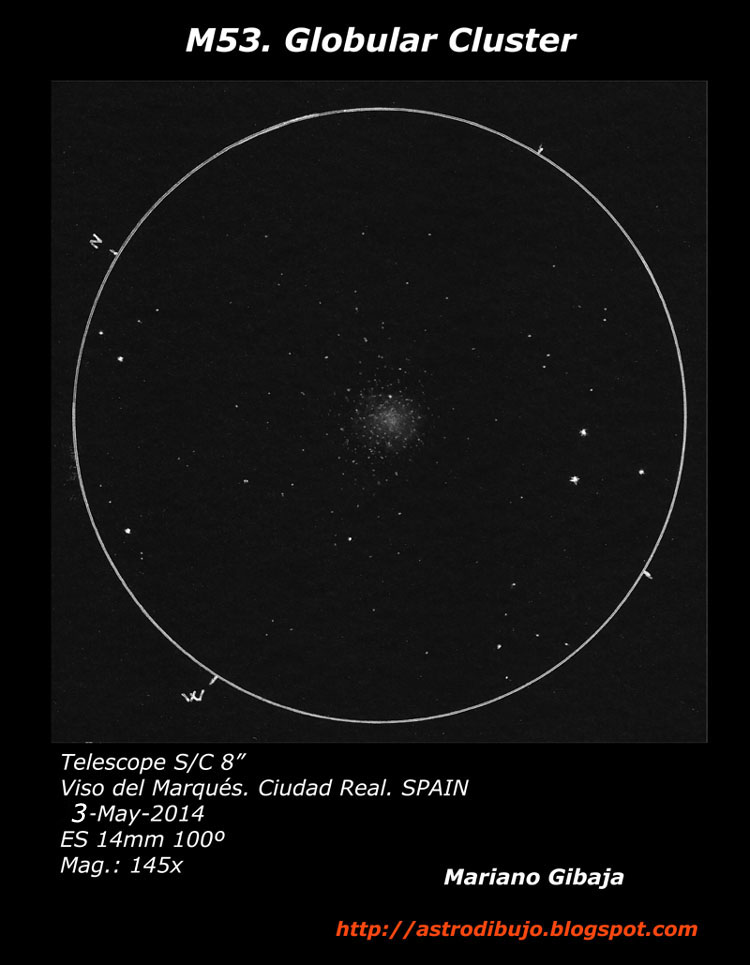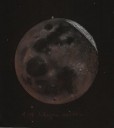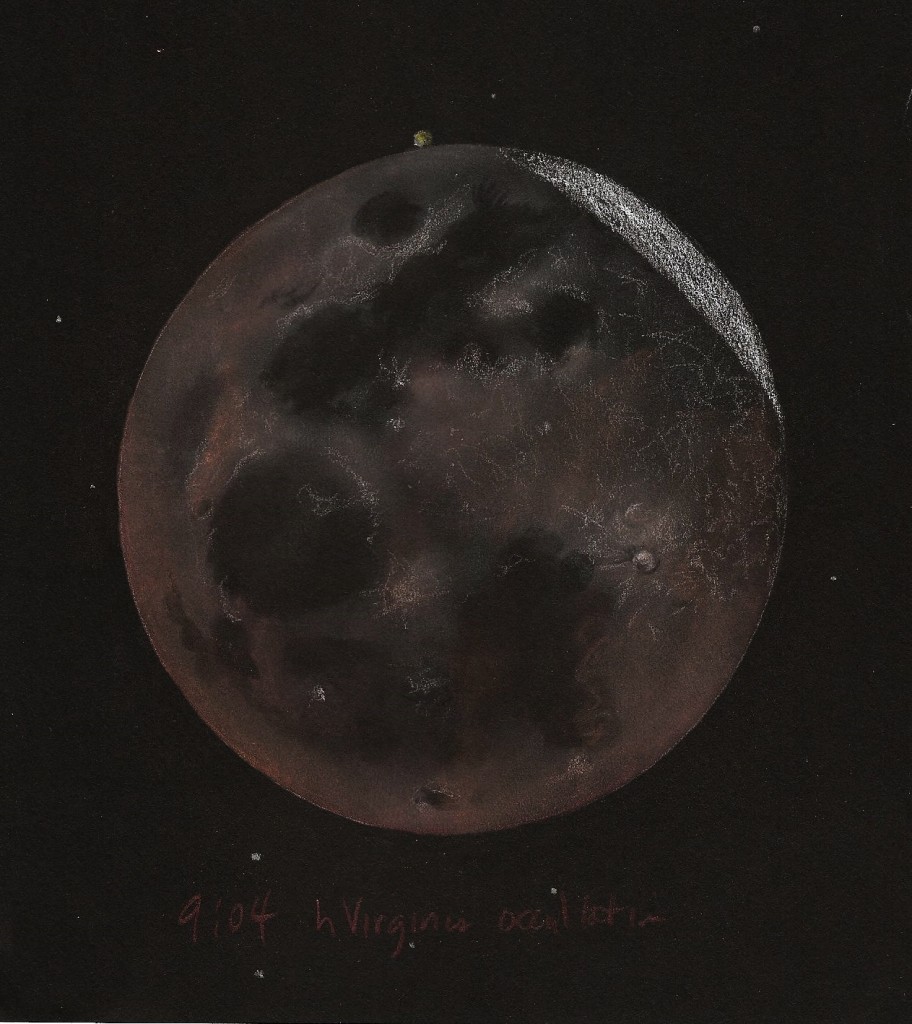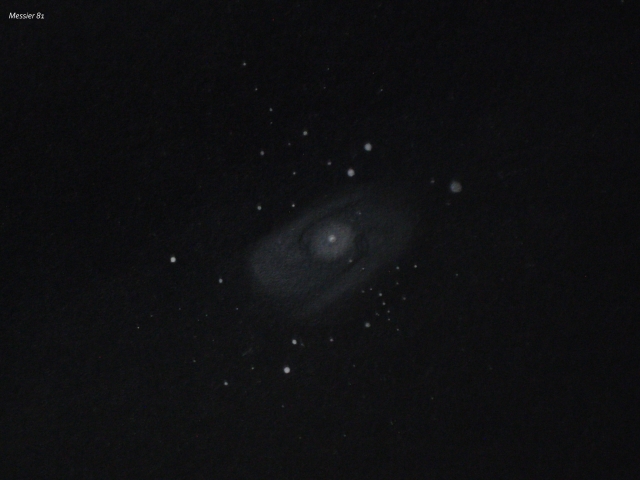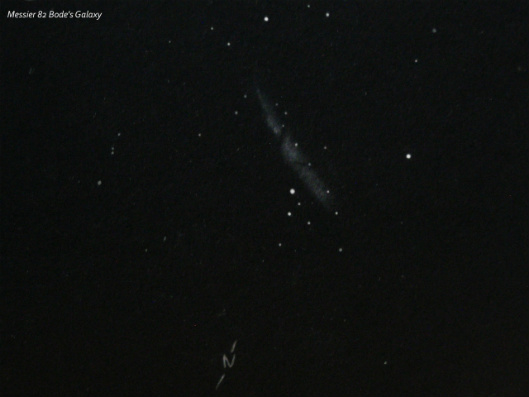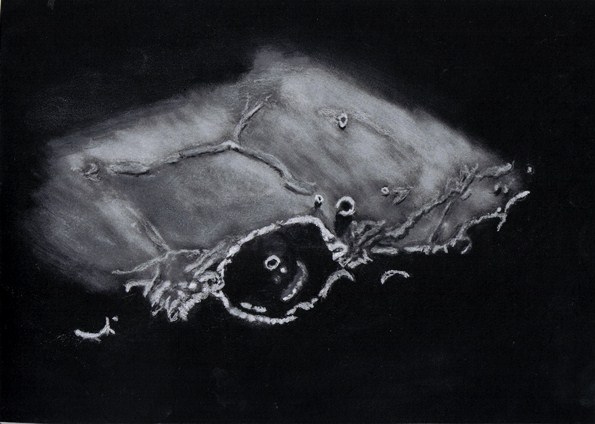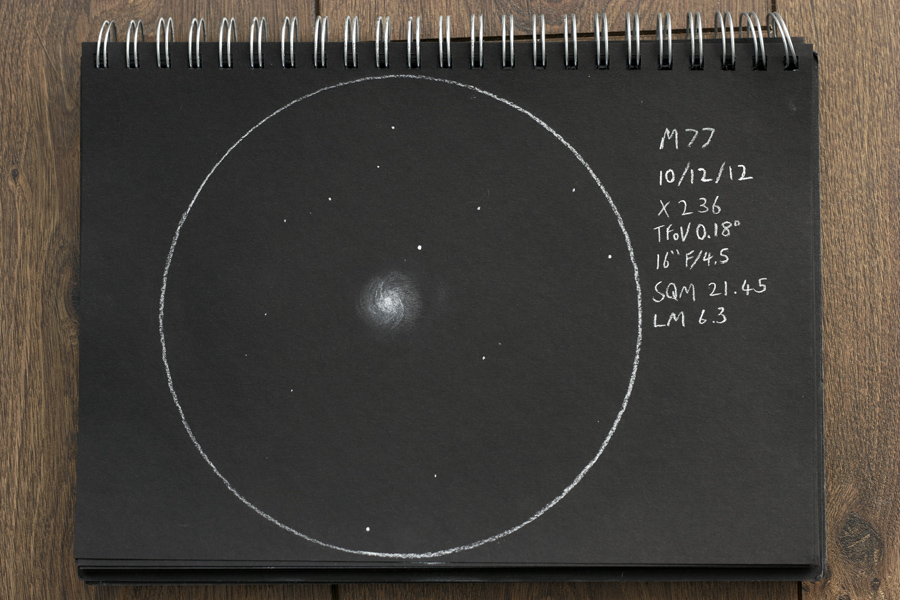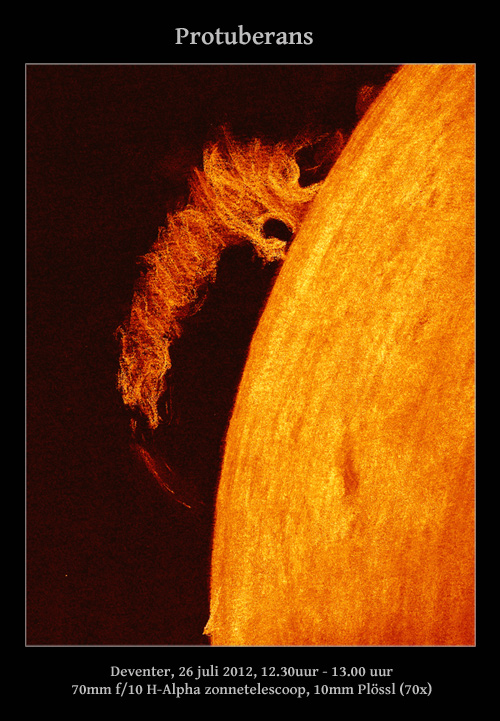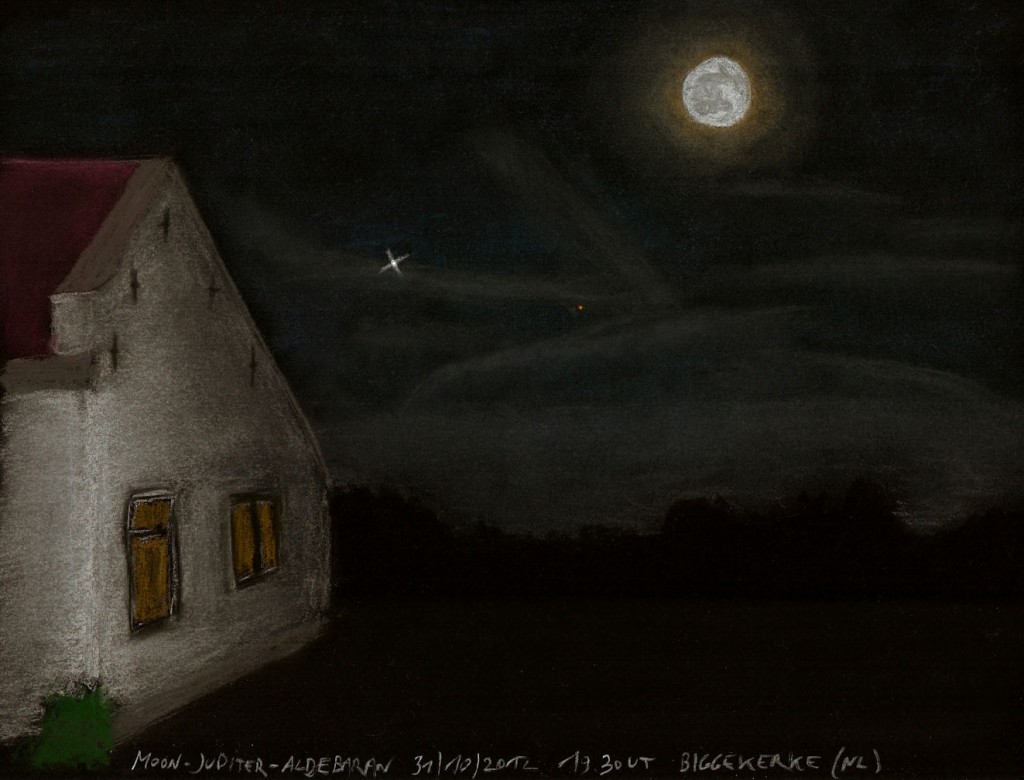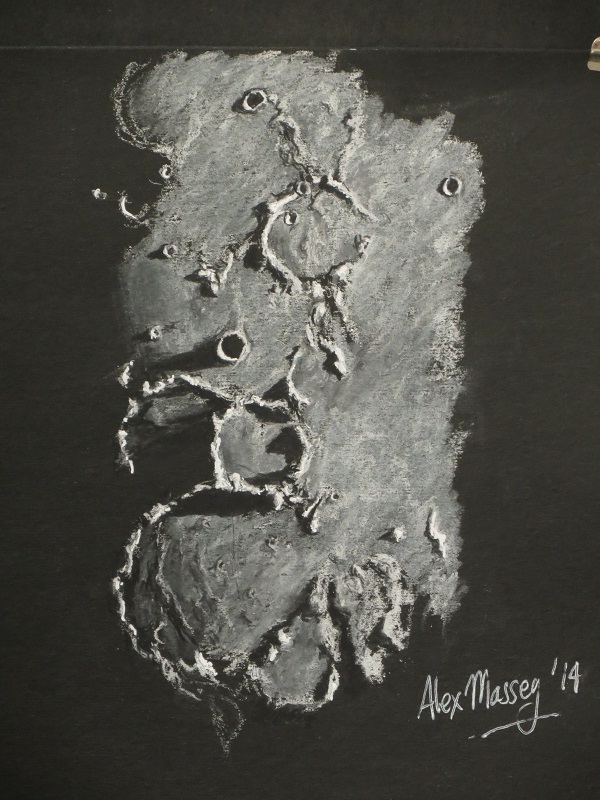
It had been a while since I did a lunar sketch. May saw me complete my first lunar sketch in many months. I made several attempts, but on those occasions, seeing was so poor the Moon was ‘boiling’ using just 100X magnification. Disappointing and frustrating. Eventually things did change in my favour…
As always, unless I have a specific target in mind, I just let my eye wonder along the terminator to see what pricks my interest. And, as there are several repeated alphanumeric apparitions on the Moon, I’ve found a second avian one! Some time ago I spotted an owl formed around the crater Mercator. Last night I found a second Owl, this time around the flooded craters Fra Mauro (the fat body), Parry (the right eye), and Bonpland (the left eye).Cute little fella I think is formed here J.
As it turns out, Fra Mauro is just to the south of the Apollo 14 landing site – south is to the top of the page, so the Apollo 14 site lies just below where the Owl’s feet would be.
Object: “Little Fat Owl”, craters Fra Mauro, Parry and Bonpland
Scope: C8, 8” SCT
Gear: 5mm Baader Hyperion, 400X
Date: 8th May, 2014
Location: Sydney, Australia
Media: White & grey soft pastel, charcoal and white ink on A5 size black paper
Duration: approx. 2hrs.


